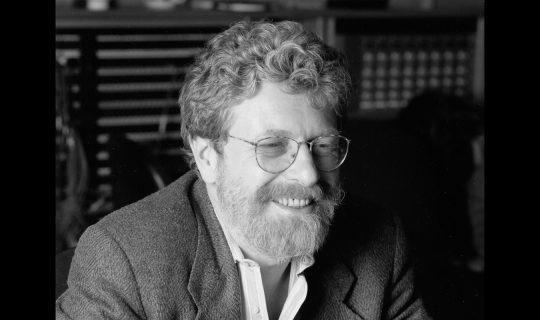January 27, 2013
Trumpeter Johnny Coles, born in Trenton, NJ in 1926, was an in-demand sideman from the 1950s to the 1970s. Though he got his start in R&B, he made a smooth transition to jazz, working with James Moody, Gil Evans (playing on Miles Davis’s Sketches of Spain) and Herbie Hancock, as well as returning to his roots with Ray Charles, and later on joined Duke Ellington’s orchestra and Art Blakey’s band. Perhaps his most famous role, though, was as trumpeter in Charles Mingus’s highly regarded 1964 sextet, which also featured reedists Eric Dolphy and Clifford Jordan, pianist Jaki Byard and drummer Dannie Richmond. Coles made few recordings as a leader, and only one for Blue Note—1965’s Little Johnny C. But his sharp, clear tone always made him stand out, and he played on several notable albums for the label during the 1960s.
Coles’ first Blue Note gig was on saxophonist Tina Brooks’ final session, in March 1961. The music wasn’t released until 2002, as The Waiting Game. It’s a punchy, swinging hard bop date featuring the two horns backed by pianist Kenny Drew, bassist Wilbur Ware, and drummer Philly Joe Jones. Coles and Brooks work well together, trading melodic, bluesy solos that showcase the lyricism that marked each man’s style. Brooks was a performer somewhat ill-served by the record industry; only one of his Blue Note albums, True Blue, was actually released during his lifetime, making him far better known as a sideman (working with Kenny Burrell, Freddie Hubbard, Jackie McLean, Jimmy Smith and others). But both he and Coles swing hard on The Waiting Game, particularly on opening track “Talkin’ About,” the forceful, yet romantic “Dhyana,” and the somewhat exotically flavored “David the King.”
In February 1963, Coles played on pianist Horace Parlan’s Happy Frame of Mind, alongside saxophonist Booker Ervin, guitarist Grant Green, bassist Butch Warren, and drummer Billy Higgins. Like The Waiting Game, it sat in the vaults for a while—it was originally released in 1976, under Ervin’s name, as Back From the Gig. Though it’s definitely grounded in the bluesy, soulful hard bop that was Parlan’s stock in trade, the album finds all the players stretching into more adventurous territory, along the line of many similar sessions Blue Note would record and release between 1963 and 1965, as they shepherded a number of “inside-outside” musicians, including Andrew Hill, Sam Rivers, and Bobby Hutcherson, among others. Like Lee Morgan’s Search for the New Land, Happy Frame of Mind offers the sound of players breaking their own self-imposed limits and uncovering rewarding new territory in the process.
The trumpeter next appeared on Green’s Am I Blue?, recorded in May 1963 with saxophonist Joe Henderson, organist John Patton, and drummer Ben Dixon. As its title suggests, this is an album suffused with a powerful, stoic melancholy, and Coles and Henderson serve as a superb chorus, punching in behind Green’s lead lines as though he was a blues or soul vocalist. When the trumpeter takes his first (brief) solo, on “Take These Chains From My Heart,” his tone is full, but somehow constricted, and his notes pierce the listener; it’s as though he’s trying to hold back tears. He plays in a similarly mournful style on the affecting “I Wanna Be Loved,” perfectly summing up the album’s overall feeling of sorrowful brooding. Am I Blue? is one of the great late-night, coffee-and-cigarettes albums in Grant Green’s discography, and Coles’ trumpet solos are one of the crucial elements of its success.
Coles recorded his sole Blue Note album as a leader at two 1963 sessions, held on July 18 and August 9. Little Johnny C was made with a mixture of well-known players—Joe Henderson on tenor sax again, Duke Pearson on piano, Bob Cranshaw on bass, Pete La Roca on drums half the time—and other, slightly more obscure musicians, like alto saxophonist Leo Wright and drummer Walter Perkins, who plays on the other half of the album. In many respects, this was as much Pearson’s session as Coles’; he wrote five of the six tunes, and did the arranging. Still, despite Pearson’s sweetly bluesy soloing on the title cut and elsewhere, it’s a horn-driven album, and the interplay between Coles and Henderson in particular is fierce and joyous, the two men trading turns in the spotlight at great speed and with sharp clarity of musical purpose.
One of Johnny Coles’ greatest recordings was lost to history for over four decades. Charles Mingus’s 1964 sextet barely got anything on tape other than European bootlegs and a single concert at New York’s Town Hall, but in 2007, Blue Note released Cornell 1964, a concert that was not only previously unreleased, but forgotten by all but those who’d been present at the time. The radically extended workouts the band indulged in—two tracks, “Fables of Faubus” and “Meditations,” run a half hour each, and three others, “Orange Was the Color of Her Hair Then Blue Silk,” “Take the ‘A’ Train,” and “So Long Eric,” are more than 15 minutes long each—provide plenty of room for lengthy soloing. Coles makes the most of his time in the spotlight, particularly on “Fables” and, of all things, a version of “When Irish Eyes Are Smiling,” a tune that elicits audience laughter as it begins, but wild applause after the band, and the trumpeter in particular, have wound their way through it.
Coles only appeared on one other session for Blue Note—he was part of the expanded ensemble that recorded Herbie Hancock’s The Prisoner. But his unique voice and style on the horn always made him a standout player, no matter the session or material.




